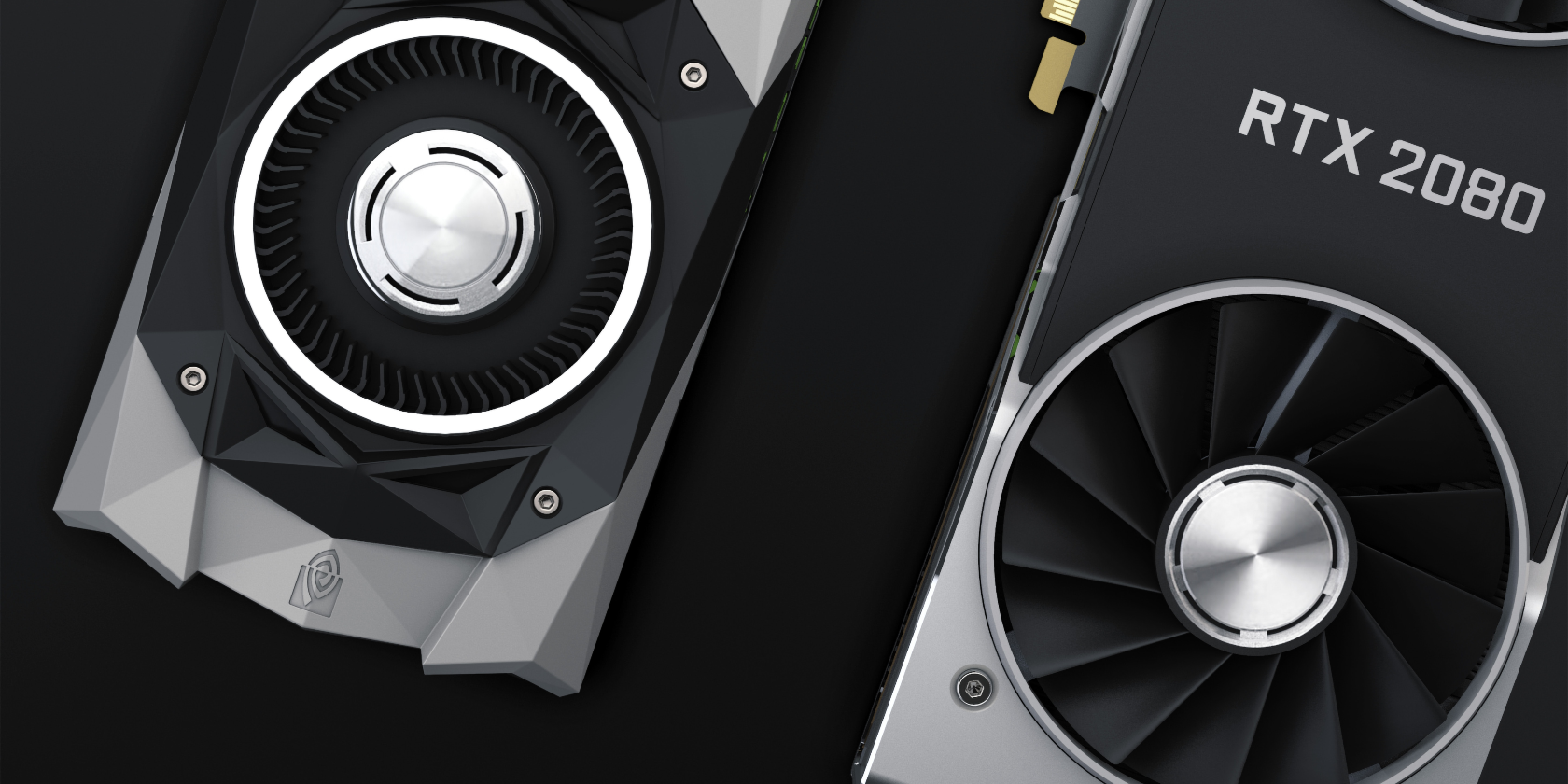The Nvidia GeForce RTX 20-Series GPUs were released in September 2018 and are the successors of Nvidia’s 10-Series GPUs.
Nvidia released the RTX 2060, 2060 Super, 2070, 2070 Super, 2080, 2080 Super, and the 2080 Ti. These cards promised to bring higher performance than the 10-Series, ray-tracing, and accelerated gaming performance with Nvidia DLSS.
Nvidia’s 30-Series GPUs were released in September 2020 and have brought even better performance than the 20-Series GPUs for a lower price. However, they’re extremely difficult to get your hands on.
How do the 2080 Super and 2080 Ti compare, and should you buy one instead of the 30-Series?
What Are The Nvidia GeForce RTX 20-Series GPUs?
The RTX 2080 was discontinued when Nvidia launched the RTX 2080 Super in July 2019, promising slightly better performance than their base model.
- At launch, the 2080 and its successor retailed for $699.
- The 2080 Super can be found on Amazon, retailing much higher than its original MSRP.
- The 2080 Ti, the highest performing of the series, can also be found on Amazon, also retailing much higher than its MSRP. This GPU allows for the best ray tracing performance and highest frame rates possible of the 20-Series line.
Here’s how the RTX 2080 Super and 2080 Ti compare.
Nvidia GeForce RTX 2080 Super vs. RTX 2080 Ti
- The RTX 2080 Super replaced the RTX 2080 in July 2019 and has only slightly better performance than its predecessor.
- The RTX 2080 Super scores 6 percent better 3D GPU speed, as well as an average of 9 percent higher frame rates on 1080p with medium graphics settings in games such as GTA V and Fortnite.
- The RTX 2080 Super and RTX 2080 both feature 8GB GDDR6 RAM, with the Super’s memory speed at 15.5Gbps, a small upgrade to the 2080’s 14Gbps.
- The slight performance boost and the RTX 2080 being discontinued for over a year are why you will have a lot of trouble finding one available. The 2080 Super can still be found readily available from around $900 and is a great find for the performance you receive.
- The RTX 2080 Ti was the last 20-series GPU to launch, featuring the same memory speed as the RTX 2080, but with a much larger number of CUDA cores, which is important for RTX, DLSS, and other matching learning attributes.
RTX On vs. Off
RTX is Nvidia’s way of improving real-time ray tracing performance using their GPUs. Ray tracing is a rendering method computers use to create images with realistic lighting and shadows in video games.
Ray tracing is usually a very graphically intensive process on your machine, which is why a lot of video games tend to replicate it as best they can by mirroring images on reflective surfaces.
Nvidia’s RTX graphics cards are built with dedicated hardware to take advantage of games that support ray tracing graphics technology.
Does RTX make a difference when you’re playing these types of games? Once ray tracing is turned on, you’ll notice shadows look more natural:
- Instead of shadows simply mirroring the character based on certain lighting conditions, you will see them look more realistic with softer edges and notice more texture of the surface they’re on.
- Windows and other reflective surfaces will also more naturally reflect light and objects within them.
So, how do RTX frame rates on the RTX 2080 Super and RTX 2080 Ti compare?
Although Nvidia’s cards contain dedicated hardware to help with ray tracing performance, it still has a significant impact on the game you’re playing.
RTX On Vs. Off: 2080 Super vs. 2080 Ti
Here’s how Battlefield V handles RTX on the 2080 Super and 2080 Ti at 1080P, with High graphics settings.
| 2080 Super | 2080 Ti | |
|---|---|---|
| RTX Off | 120 FPS | 144 FPS |
| RTX On | 59 FPS | 69 FPS |
Although Nvidia’s dedicated hardware seems to help improve ray tracing performance, the frame rate is shown to still have a significant drop with ray tracing on.
The frame rate performance is still very good with RTX on, as even the newer Nvidia RTX 3070 (released in 2020) averages between 65 - 75 frames per second in games like Battlefield V and Shadow of the Tomb Raider.
DLSS On vs. Off
DLSS stands for Deep Learning Super Sampling, and it uses artificial intelligence to boost frame rates without sacrificing resolution and other graphically intensive settings.
This rendering technique allows for greater frame rates at a higher resolution for a better visual experience. This process allows you to run games at 4K DLSS at a far higher frame rate than native 4K.
DLSS On vs. Off: 2080 Super vs. 2080 Ti
Here’s how the RTX 2080 Super and 2080 Ti handle Monster Hunter World in 4K, with High graphics settings and DLSS.
| 2080 Super | 2080 Ti | |
|---|---|---|
| DLSS On | 55 FPS | 75 FPS |
| DLSS Off | 36 FPS | 45 FPS |
Though impressive, each game will perform differently due to different characteristics with lighting, textures, and your GPU’s workload.
For example, if you are playing a game that heavily utilizes your GPU, DLSS can help boost performance, more so than if your frame rates for that game are already high while playing a less graphically intensive game.
Why Are Prices For Graphics Cards Rising?
Since the Nvidia 30-Series GPUs released in September, they have been extremely difficult to purchase due to their fantastic price to performance ratio.
The RTX 3070 retails for around $500 and almost matches the performance of the RTX 2080 Ti, which is currently retailing for around $1,200. As soon as the performance specifications were revealed, the RTX 30-Series GPUs sold out almost immediately and have been difficult to purchase ever since.
Prices of all Nvidia’s GPUs only keep rising on third-party sites. Nvidia’s GPUs, along with motherboards, are now included in tariffs placed on Chinese imported products. This imposes a 25 percent tax on any Chinese imported GPU, with certain manufactures passing along that cost to consumers.
Anyone looking to get their hands on these well sought-after PC components should be ready to pay a premium, whether it’s bought through a manufacturer or buying used from someone within the United States. Scalpers at the RTX 30-Series launch and the rising popularity of cryptocurrency mining can also be to blame for the skyrocketing price of these cards.
Nvidia and AMD are struggling to keep up with supply due to high demand and continue to have a shortage of GDDR6 memory into the first quarter of the year. Although Nvidia has stated that the GDDR6X memory modules used in the 3080 are less affected by supply issues, a shortage of various other components is also slowing down production.
If you have been dying to build your new gaming PC and you already have every other component you need, you’re still in luck if you’re willing to pay a premium for one of Nivida’s 20-Series cards sold through third-party sites. But which one should you buy?
Should You Wait For The 30-Series Restock?
Deciding on a new GPU is a difficult choice to make.
While lots of us continue to work from home, the desire to build our next or first gaming PC right now is high. It will be tough waiting for the Nvidia 30-Series GPUs to restock, but that seems to be the best decision to make right now. While we wait, there are many other GPUs out there at different price points to get and test out in our new setups.
About The Author

